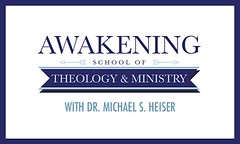This is a new feature I have started on my blog. As often as I can, I will be posting one of the 198 Appendices of the Companion Bible. It is an amazing study and reference tool, and I thought that it might be helpful and interesting to preview some of the resources available in it. This Bible was compiled by one of the great scholars of the past, Dr. E.W. Bullinger. You can check out some of his other books here. If you would like to access the entire Companion Bible in an online edition, it is available here. Hope you find this interesting and inspiring.
The Companion Bible Appendix # 105 - The Usage of Negatives in the N.T.
More books by E.W. Bullinger
Wednesday, June 29, 2011
The Companion Bible Appendix # 105 - The Usage of Negatives in the N.T.
Posted by
Steve McHenry
at
4:46 PM
0
comments
![]()
Labels: Appendix, Companion Bible, E.W. Bullinger
Tuesday, June 28, 2011
The Companion Bible Appendix # 104 - Prepositions
This is a new feature I have started on my blog. As often as I can, I will be posting one of the 198 Appendices of the Companion Bible. It is an amazing study and reference tool, and I thought that it might be helpful and interesting to preview some of the resources available in it. This Bible was compiled by one of the great scholars of the past, Dr. E.W. Bullinger. You can check out some of his other books here. If you would like to access the entire Companion Bible in an online edition, it is available here. Hope you find this interesting and inspiring.
The Companion Bible Appendix # 104 - Prepositions
More books by E.W. Bullinger
The Companion Bible Appendix # 104 - Prepositions
Posted by
Steve McHenry
at
10:11 AM
0
comments
![]()
Labels: Appendix, Companion Bible, E.W. Bullinger
Friday, June 24, 2011
"Phonehenge West" Documentary by Devin Schiro
Alan Kimble "Kim" Fahey has spent more than twenty years working, mostly single-handedly, to turn his Acton, California property into the wonderland of habitable sculpture he has named "Phonehenge West." He is retired from a 30-year career as a phone service technician.
Hundreds of people have visited the property and admired the wonderful invention and solid construction of Kim's buildings...even the unfinished segments are beautiful. Now the County of Los Angeles has declared its intent to condemn not only his work, but the man himself to a jail term longer than those handed out for some violent crimes against actual victims.
I encourage you to judge for yourself whether the County's obstructive hard line is reasonable and just, or a gross miscarriage of justice.
You are invited to join a growing community of people who protest what we consider the senseless persecution of a man whose only "offense" is taking a stand on behalf of beauty, creativity, and the inalienable right of free expression.
Become a Friend of Save Phonehenge West on Facebook, share links to this page with your contacts, and find out how you can speak out to preserve both an artistic landmark and a decent man's freedom.
To join the fight:
facebook.com/PhonehengeW
To donate:
SavePhonehengeWest.org
An excellent article on the housing injustices occurring in the Antelope Valley, Phonehenge included:
laweekly.com/2011-06-23/news/l-a-county-s-private-property-war/
Kim's book, "Hollywood Unlisted"
Feel free to call Kim & Pat Fahey at 661-269-0605. They're extremely friendly people, and would love to talk to you about what's going on.
"Phonehenge West" Documentary by Devin Schiro
Posted by
Steve McHenry
at
11:50 PM
0
comments
![]()
Labels: Book, Conspiracy, Donations, Freedom, Politics
Saturday, June 18, 2011
E Street Band's "Big Man" Clarence Clemons Dies At 69
E Street Band's "Big Man" Clarence Clemons Dies At 69
Posted by
Steve McHenry
at
9:07 PM
0
comments
![]()
Labels: Obituary
Saturday, June 04, 2011
Help Kim Fahey Save "Phonehenge West"
This site was built specifically to have a place for a DONATE button so people can contribute to Kim Fahey's legal expenses, as well as potentially helping to finance code requirements that he may be stuck with.
It's important for you to know that Save Phonehenge West is not a non-profit organization, so you can not claim your donation as tax-exempt, and neither can Kim. We can't achieve non-profit status quickly and Kim needs your help now. You can email Kim at kim@savephonehengewest.org.
Thank you for your support!

Help Kim Fahey Save "Phonehenge West"
Posted by
Steve McHenry
at
11:54 AM
0
comments
![]()
Labels: Conspiracy, Freedom, Politics, Trials
Thursday, June 02, 2011
Alan Kimble Fahey, creator of 'Phonehenge West' to testify in code enforcement case
Acton man faces possible time behind bars if convicted in the trial over his home, built partly of utility poles.
Alan Kimble Fahey, 59, spent almost three decades constructing the 20,000-square-foot labyrinth of interconnected buildings — including a 70-foot tower — he calls Phonehenge West. In 2008, Los Angeles County code enforcement officials ordered him to stop. They have demanded that he tear the structure down.
Photos: 'Phonehenge West'
Fahey's lawyer, Jerry Lennon, said that his client's creation was unique and that regulators should demonstrate some flexibility.
"There should be room in the world of administrative regulations where they account for people like Fahey," Lennon said. "He's not hurting anyone; and I don't think there's a mechanical or structural problem he can't resolve."
Lennon also argued that building code officials were lax in tracking the case over many years and missed opportunities to find an equitable solution.
But in opening arguments last week, Los Angeles County deputy Dist. Atty. Patrick David Campbell told jurors that Fahey flouted building code regulations because he considered himself above the law and that he set his own standards for construction.
"Fahey doesn't believe the rules apply to him," Campbell said. "He has set up his own arrogant interpretation of the law."
Speaking before Superior Court Judge Daviann L. Mitchell, Campbell said the foundations of several of Fahey's structures were built with telephone poles and were "inherently unsafe" and could hurt people. He summed up the case as "Never-Never Land."
The prosecutor called on building code and zoning enforcement officials, who detailed the process for applying for building permits and the history of the agency's dealings with Fahey.
Daniel Geringer, a county regional planning assistant, told the court that Fahey had been notified that he was in violation on several fronts. The infractions included maintaining a structure that exceeds the maximum height limit of 35 feet and possession of two noncommercial wind turbines.
Copyright 2011 Los Angeles Times
Alan Kimble Fahey, creator of 'Phonehenge West' to testify in code enforcement case
Posted by
Steve McHenry
at
9:15 AM
0
comments
![]()
Labels: Conspiracy, Freedom, Politics, Trials








